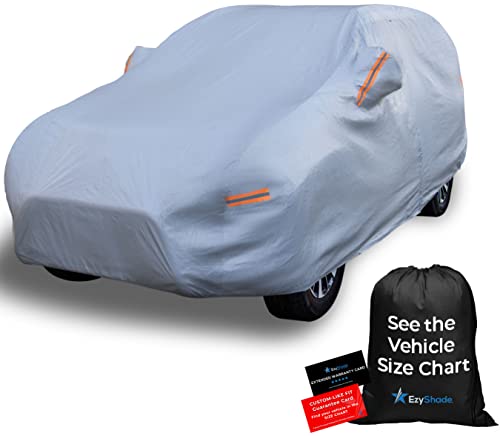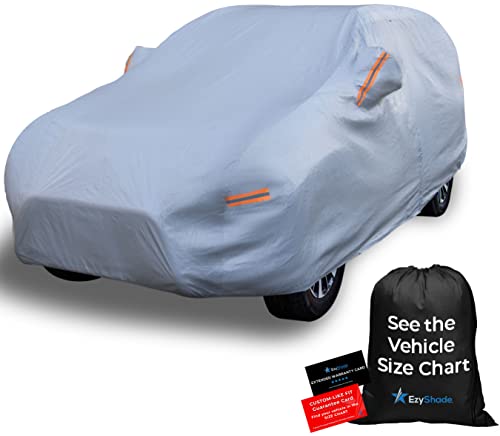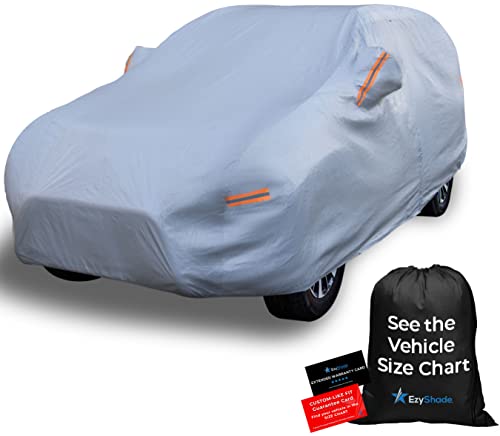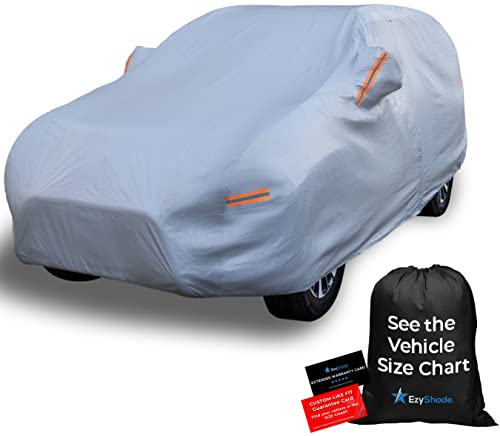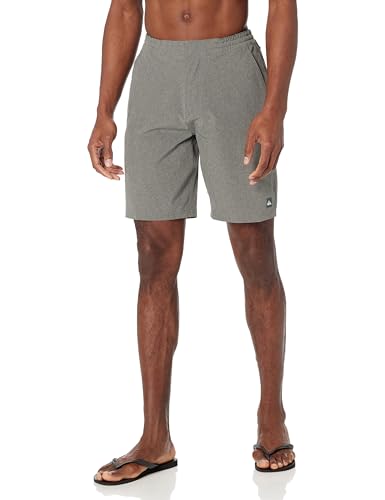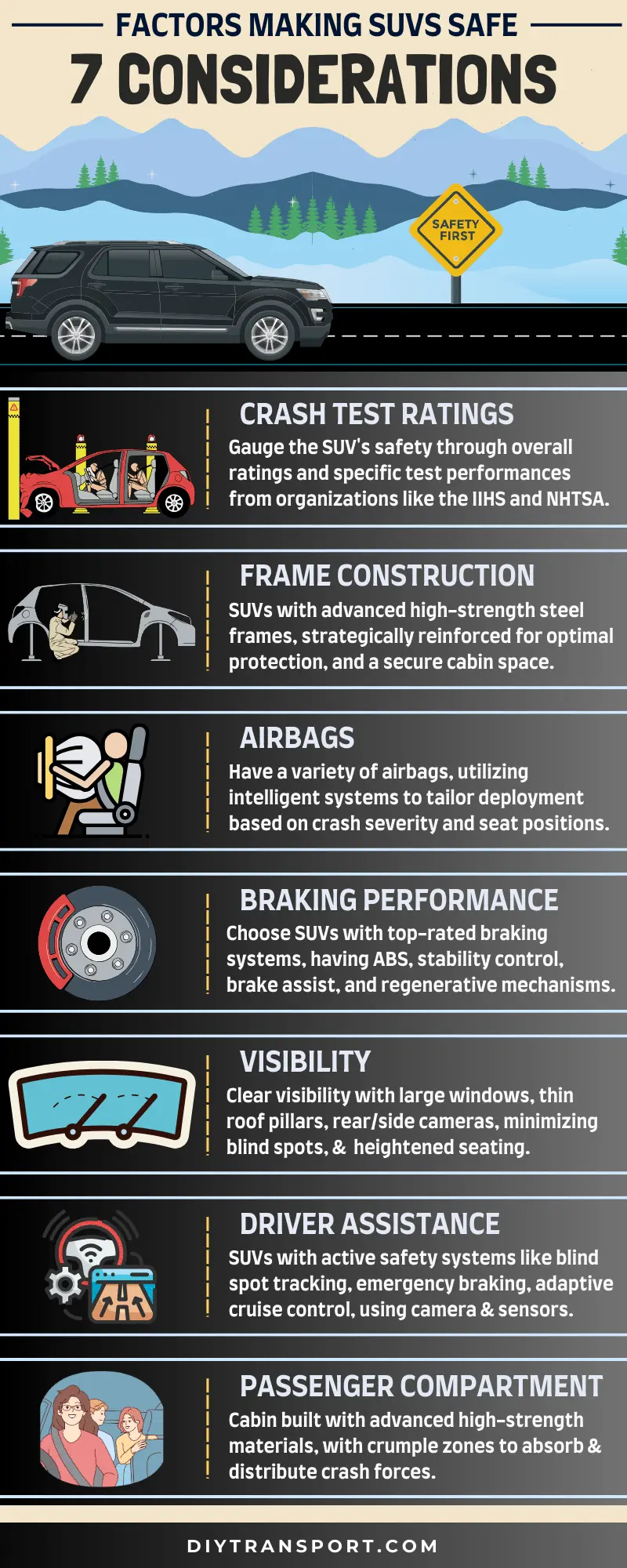
What SUV has the Best Safety Features
Determining what SUV has the best safety features involves looking at various aspects. Modern SUVs come equipped with advanced technologies that enhance passenger safety. Key features include adaptive cruise control, automatic emergency braking, and lane-keeping assist. These systems, often working together, help prevent accidents and protect occupants. Additionally, crash test ratings from agencies like the National Highway Traffic Safety Administration (NHTSA) and the Insurance Institute for Highway Safety (IIHS) are also crucial indicators of safety.
Some popular SUVs consistently rank high for safety features. For instance, models like the Volvo XC90, Subaru Ascent, and Toyota Highlander are known for their comprehensive safety packages. These SUVs not only have standard features but also offer optional packages that enhance safety further. Manufacturers often add more airbags and enhanced structural designs to reduce injury in a crash. Here are a few standout safety features found in top-rated SUVs:
- Adaptive cruise control
- Blind-spot monitoring
- Rear cross-traffic alert
- Automatic high beams
Safety ratings are another critical factor in determining the best SUVs. The IIHS uses a variety of tests to evaluate vehicles, including crashworthiness and crash avoidance. The NHTSA rates vehicles based on frontal, side, and rollover crashes. SUVs that score well in these tests offer added peace of mind to drivers. Consumers should consider vehicles that have earned top marks in these ratings, especially those with five-star ratings from the NHTSA or Top Safety Pick+ awards from the IIHS.
Lastly, advanced driver-assistance systems (ADAS) play a significant role in car safety. Features like lane departure warning, automatic emergency braking, and pedestrian detection help avoid accidents. Emerging technologies like semi-autonomous driving modes are also becoming popular. These systems help maintain proper distances from other vehicles and keep the SUV in its lane. Overall, a combination of advanced features and high safety ratings makes for the safest SUVs on the market.
Breaking Down the Criteria: What Constitutes Best Safety Features in an SUV
To determine the best safety features in an SUV, we need to understand what makes a feature truly effective. One critical aspect is crash prevention. Advanced Driver Assistance Systems (ADAS) like lane-keeping assist and adaptive cruise control help drivers avoid accidents. These systems use radar and cameras to monitor surroundings and alert drivers to potential hazards. Additionally, automatic emergency braking can stop the vehicle to prevent a collision.
Structural integrity also plays a vital role in safety. SUVs with robust frames can better absorb the impact of a crash, protecting passengers inside. Manufacturers often use advanced materials like high-strength steel and aluminum for this purpose. Crumple zones, designed to absorb impact energy, further enhance safety. Another key point is how well the SUV protects its occupants in various crash scenarios.
Airbags are a fundamental aspect of safety in all modern vehicles. In addition to front airbags, side-curtain airbags provide protection during side collisions and rollovers. Some SUVs also include knee airbags to protect the lower body. More airbags generally mean better protection for passengers. Ensuring that airbags deploy correctly during a crash is equally important.
Visibility features are another crucial factor. High-quality headlights with automatic high beams improve nighttime driving. Blind-spot monitoring systems alert drivers to unseen vehicles, reducing the chance of side collisions. Rearview cameras and parking sensors are also standard in many SUVs. These features make parking easier and help prevent accidents while reversing.
Key Safety Features to Look for When Choosing an SUV
When choosing an SUV, it’s important to consider various safety features that can protect you and your passengers. One essential feature is adaptive cruise control. This system maintains a safe distance from the car in front by automatically adjusting the SUV’s speed. It helps reduce the risk of rear-end collisions, especially during long drives on highways. This feature works best in conjunction with other driver assistance systems.
Another vital feature is the blind-spot monitoring system. This technology alerts the driver if there’s a vehicle in the blind spot, making lane changes safer. Some SUVs also have rear cross-traffic alert, which warns of approaching vehicles when you’re backing out of a parking spot. These features are particularly useful in busy traffic and tight parking spaces. Together, they make driving less stressful and more secure.
Lane-keeping assist is another key safety feature. This system detects when the SUV is drifting out of its lane and gently steers it back. It can help prevent accidents caused by distracted driving or fatigue. Along with lane departure warning, which alerts you if you unintentionally leave your lane, these features promote safer driving habits. They are often bundled in ADAS packages offered by various manufacturers.
Lastly, consider the SUV’s overall structural design and crashworthiness. High-strength steel and well-designed crumple zones are crucial for protecting occupants during a collision. Several models come with a suite of airbags, including front, side, and curtain airbags for comprehensive protection. Features like automatic emergency braking also play a role in enhancing crash safety. To compare different SUVs, check their crash test ratings from organizations like the IIHS and NHTSA.
Case Study: Examining the Safety Features of Leading SUV Models
When evaluating the safety features of leading SUV models, we can look at several noteworthy examples. The Volvo XC90 is renowned for its extensive safety system. It includes City Safety, which detects other vehicles, pedestrians, and cyclists to prevent collisions. The XC90 also offers Pilot Assist, a semi-autonomous driving feature. This SUV consistently receives high marks in crash tests.
The Subaru Ascent is another SUV with impressive safety credentials. It comes standard with Subaru’s EyeSight Driver Assist Technology. EyeSight includes adaptive cruise control, pre-collision braking, and lane departure warning. Additionally, the Ascent features an advanced airbag system to protect every passenger. This combination of technologies makes the Ascent a top choice for safety-conscious buyers.
Another contender is the Toyota Highlander, which integrates Toyota Safety Sense 2.5+ as standard. This suite offers features such as lane departure alert, automatic high beams, and dynamic radar cruise control. The Highlander also has a pre-collision system with pedestrian detection. These features collectively enhance both active and passive safety.
Examining their safety features, it’s clear these SUVs prioritize both prevention and protection. Each model blends advanced driver assistance systems with robust structural designs. They aim to offer maximum safety to their occupants. Whether it’s through ADAS or strong crash ratings, these SUVs set a high benchmark.
Additional features like blind-spot monitoring and rear cross-traffic alert are often standard in these models. Volvo, Subaru, and Toyota have prioritized integrating these technologies into their designs. This attention to detail sets them apart in the crowded SUV market. These features not only provide peace of mind but also make daily driving safer.
For anyone seeking a safe SUV, these models are top contenders. They demonstrate how advanced safety features and thoughtful design contribute to vehicle safety. Choosing one of these SUVs means investing in reliable safety technology. This makes Volvo, Subaru, and Toyota leaders in automotive safety.
How Technological Advancements are Enhancing SUV Safety
Technological advancements play a crucial role in improving SUV safety. One significant development is Advanced Driver Assistance Systems (ADAS). These systems include features like adaptive cruise control, which automatically adjusts speed to maintain a safe distance from other cars. Another essential ADAS feature is lane-keeping assist, which steers the vehicle back into its lane if it begins to drift. Such technologies make driving safer by reducing human error.
Automatic emergency braking (AEB) is another game-changer. This system detects potential collisions and applies the brakes if the driver doesn’t react in time. AEB can prevent many rear-end accidents and even reduce the severity of crashes that do occur. Many new SUVs now come standard with this feature, highlighting its importance. The inclusion of AEB marks significant progress in vehicle safety.
Blind-spot monitoring systems have also enhanced safety features in SUVs. These systems use sensors to detect vehicles in the driver’s blind spots. When a vehicle is detected, the system alerts the driver through visual or audible warnings. Rear cross-traffic alert further aids in reversing by warning drivers of approaching cars from the sides. Together, these technologies minimize the risk of side collisions.
Another advancement is the use of 360-degree cameras. These cameras provide a bird’s-eye view of the vehicle’s surroundings. This is particularly useful when parking in tight spaces. Some systems even offer automated parking assistance, guiding the SUV into a parking spot. The use of these cameras significantly reduces the likelihood of parking accidents.
SUVs also benefit from enhanced structural materials. High-strength steel and aluminum alloys make the body more robust, improving crash protection. Crumple zones in the front and rear absorb impact energy, safeguarding occupants. Manufacturers are continually pushing the envelope in material science. The result is safer vehicles that perform better in crash tests.
Lastly, semi-autonomous driving technology is becoming more prevalent. Features like Tesla’s Autopilot and Volvo’s Pilot Assist allow the SUV to steer, accelerate, and brake automatically under certain conditions. These systems require driver supervision but offer significant safety benefits. By reducing driver fatigue, semi-autonomous systems make long drives safer and more comfortable.
Future Trends: Forecasted Developments in SUV Safety Features
The future of SUV safety looks promising with several advanced features on the horizon. One such trend is Vehicle-to-Everything (V2X) communication. This technology enables the vehicle to communicate with other cars, traffic signals, and even pedestrians. V2X can alert drivers to potential hazards in real-time, making roads safer. Automakers are investing heavily in this technology to improve overall traffic safety.
Another exciting development is augmented reality (AR) dashboards. AR displays project important information directly onto the windshield. This technology helps drivers keep their eyes on the road while receiving crucial alerts. AR dashboards can show navigation directions, speed limits, and even warnings about obstacles. Such features can significantly enhance driver awareness and response time.
Artificial intelligence (AI) is also set to revolutionize SUV safety. AI-powered systems can learn a driver’s habits and make personalized safety recommendations. These systems can predict and avoid potential accidents. AI can also optimize the SUV’s performance based on real-time data. This makes driving not just safer but also more efficient.
The integration of advanced sensors is another key trend. Future SUVs will feature more sophisticated sensors that can detect a variety of road conditions. These sensors will work seamlessly with other safety systems to offer a comprehensive safety package. Enhanced sensors will also improve the effectiveness of automatic emergency braking and lane-keeping assist. This will result in fewer accidents and safer journeys.
Another area of focus is the development of better battery technologies for electric SUVs. Improved batteries will offer longer ranges and faster charging times. This will not only make electric SUVs more convenient but also potentially safer. For example, a longer range reduces the need for frequent stops, which can minimize the risk of accidents on long trips. Better batteries also enable the integration of more advanced safety features that require substantial power.
Lastly, the rise of semi-autonomous and fully autonomous driving technologies will greatly impact SUV safety. These systems aim to eliminate human error, which is a leading cause of accidents. As these technologies become more reliable and widespread, the likelihood of accidents will decrease. This represents a major leap forward in automotive safety.
Key Takeaways
- The Volvo XC90 is known for its exceptional safety features.
- Subaru Ascent offers top-rated driver assistance systems.
- Toyota Highlander includes advanced crash protection technologies.
- All three SUVs receive high ratings from IIHS and NHTSA.
- These models prioritize both active and passive safety measures.
Frequently Asked Questions
1. What makes adaptive cruise control important in an SUV?
Adaptive cruise control is crucial because it maintains a safe distance from the car ahead by automatically adjusting speed. This feature can reduce the risk of rear-end collisions, especially during long drives on highways.
It works seamlessly with other driver assistance systems, making driving more comfortable and safer. By reducing the need for constant manual adjustments, it minimizes driver fatigue.
2. How does blind-spot monitoring enhance safety in an SUV?
Blind-spot monitoring alerts drivers if there’s a vehicle in their blind spot, helping them make safer lane changes. This reduces the chances of side collisions that occur due to unseen vehicles when switching lanes.
This system often includes rear cross-traffic alert, which warns of approaching cars when reversing out of parking spaces. Together, these features enhance overall situational awareness while driving.
3. Why is automatic emergency braking (AEB) essential for modern SUVs?
AEB detects potential collisions and applies brakes if the driver doesn’t react in time, preventing many rear-end accidents. It has become a standard feature in many new SUVs due to its effectiveness.
This technology significantly improves passenger safety by minimizing impact severity during crashes or avoiding them altogether. It provides an additional layer of security beyond basic driver reactions.
4. What role do crash test ratings play in choosing a safe SUV?
Crash test ratings from agencies like IIHS and NHTSA evaluate how well a vehicle protects occupants during various types of accidents. High ratings indicate strong performance and effective safety features that offer better protection.
SUVs with top ratings have undergone rigorous testing to prove their crashworthiness. These ratings give consumers peace of mind knowing they are choosing one of the safest options available.
5. How do advanced sensors contribute to SUV safety?
Sophisticated sensors detect road conditions and potential hazards, working with systems like AEB and lane-keeping assist for comprehensive safety coverage. Enhanced sensors provide real-time data to improve vehicle responses and avoid accidents.
The integration of these sensors enhances overall driving experience by offering precise information about surroundings. Advanced sensor technology continues to evolve, making future vehicles even safer.


